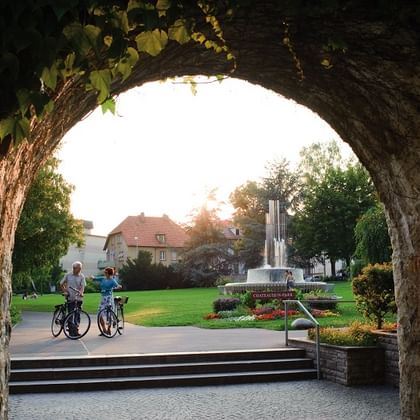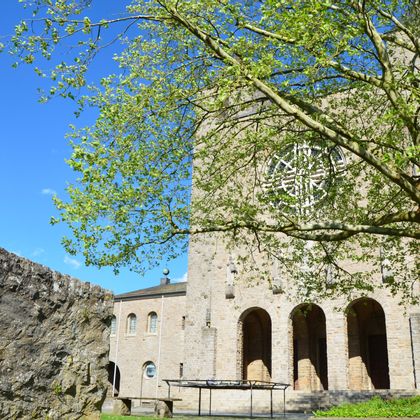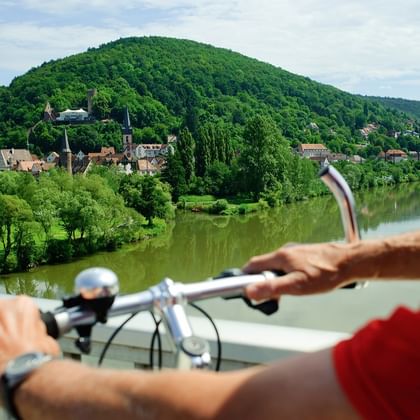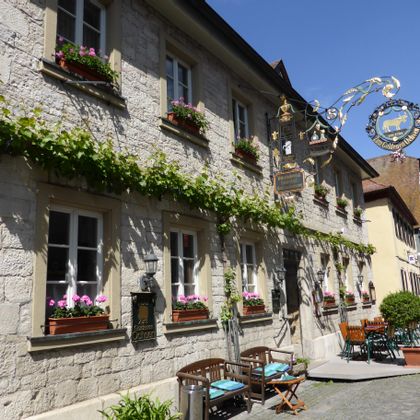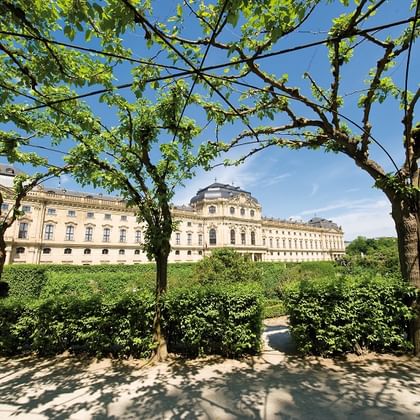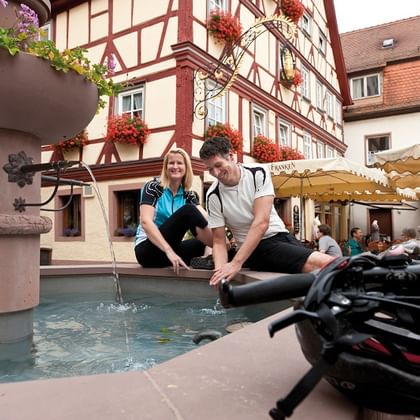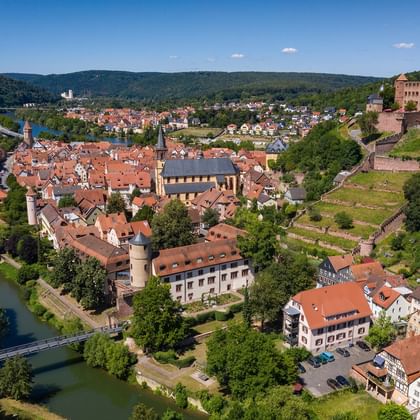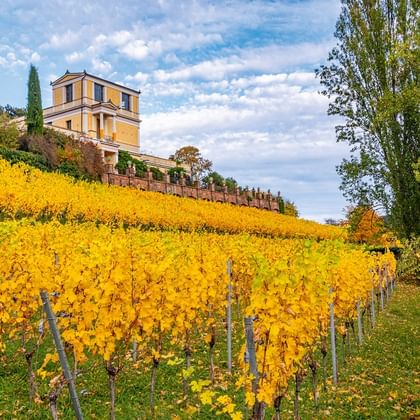Tour
The Old-town of Bamberg will capture right after your arrival and make you want to visit every corner of its UNESCO world cultural heritage.
Follow the Regnitz for a short moment until you reaching the Main River, taking you now to the beautiful pilgrimage church Maria Limbach. You will soon reach the first vineyards marking the border between the beer-brewing and the wine-growing areas of Franconia. Let a sunny day come to its end in Haßfurt where another historical Old-town will impress you.
A short side-trip to Theres is recommendable today: After a nice break there, you will continue along the edge of the Main to Schweinfurt. Discover the vestiges of the ancient imperial town and walk on the footprints of the industrial pioneers and discoverers and let the modern Schweinfurt treat you!
Passing numerous vineyards, you will cycle through the small, historic wine-growing town Wipfeld, home of the "Zehntgraf". Take a relaxing break here and marvel at the precious old buildings of the town and its idyllic situation. In the afternoon, you will cross Fahr, town of the Bocksbeutel (the local wine is sold in this unique kind of container), to reach Volkach, famous for its excellent wines!
Leaving Volkach behind, you will follow the Main-channel before catching up to the Main River again in Schwarzach. By the side of the channel, you will have the chance to make a stop in Dettelbach, whose city wall has been preserved almost completely. It still has its 30 towers and both gates, making you want to take a walk around. The impressive St. Augustinus church in the centre of the Old-town with its two unequal towers is just as beautiful as the pilgrimage church Maria im Sand, known all over Europe as a unique example of architecture from the Late-Gothic and Renaissance period. After this visit in Dettelbach, you will reach Kitzingen in no time thanks to the well-paved and even Main-bike trail. Another historical Old-Town and more wine in Germanys oldest wine cellar wait for you here.
How to find out which one of these lovely places with their wine-growing traditions is the most beautiful one? There will not be very much time to think about it as Ochsenfurt, Sommerhausen and Eibelstadt are waiting for you now on your way to the amazing residence of Würzburg. The market place, the town hall, the old bridge crossing the Main offering an impressive view over the fortress, the pilgrimage church, the Rococo-style face of the Falkenhaus and Tilman Riemenschneiders sandstone figures of the Chapel of Our Lady, will dazzle you. The highlight is the former residence of the prince-bishop, built between 1720 and 1744 according to plans of Balthasar Neumann. Considering the overall impression, it is the most beautiful castle of the southern German Baroque.
You will have only just left Würzburg and another highlight is already waiting for you: Veitshöchheim with the prince-bishops summer residence and the French rococo-garden. The residence's garden was arranged by the prince-bishops of Würzburg and is today still known as one of the most beautiful ones of its kind in Germany. In between alleys and small paths seamed by hedges you will discover numerous pergolas, pavilions, circular flower beds and last but not least the Great Lake. The castle who originally served as a hunting lodge, then as a summer residence, was built under the prince-bishop of Dernbach in 1680/82 and extended by Balthasar Neumann in 1749/53. Take your time for a visit; Karlstadt will be reached on well-paved bike trails in no time afterwards.
Even paths take you to Gemünden, where the three rivers meet. Walk around the Old-Town and up to the ruin of Scherenburg castle to enjoy the fantastic view over the Main valley, the Spessart and the Rhön from here. Then, the wooded hills seem to cuddle up closer and closer, forcing the Main River and the cyclists to wind themselves through. This is how you will easily reach Lohr, the gate to the Spessart nature resort.
You will reach Marktheidenfeld via Rothenfels, where the castle seems to watch over the valley attentively. Walk around the charming Old-town past the historical half-timbered houses, romantic narrow streets and enjoy a cup of coffee on the marketplace next to the fishermens fountain. Close to the river, you will follow the bike trail past the castle of Homburg to Wertheim. The graceful small half-timbered houses and the narrow streets will capture you for sure!
Miltenberg presents itself with pride: Let the half-timbered style, the market place, also called "Schnatterloch", and the Gasthaus zum Riesen, Germanys oldest shelter for princes who came to spend the night in Miltenberg, amaze you. The Old-town lies tucked in tightly between the Main and Greinberg; perfect scenery for scary stories and legends you should absolutely learn about on a guided tour around town.
On even bike trails, you will quickly reach the sandstone-built Johannisburg castle of Aschaffenburg today after passing the Spessart and the Odenwald. The romantic Old-town sprawls over the hilltop with the town hall in its centre and up to the castle. Visit the church of the monastery, the Jesuits church and the square in front of the theatre with its sundial and the lions pharmacy.
After breakfast your nice cycle holiday ends in Aschaffenburg. We recommend our transfer service back to Bamberg (every Wednesday, Saturday and Sunday, departure 9am, duration about 3 hrs.)
Map
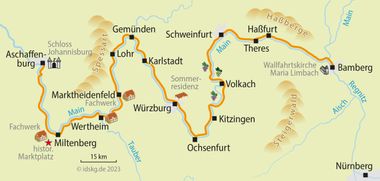
Prices / Dates
Services / Info
- Overnight stays with breakfast in middle-class hotels or comfortable, family-run inns and hotels
- Room with bath / WC
- Luggage transport
- Digital route guidance via app
- Tips for trip preparation
- Tourist information
- 7-day hotline service
Worth knowing about the bike tour Main: Bamberg - Aschaffenburg laid-back tour
Below you will find specific and helpful information. If you have further questions about this trip, you simply call us: Phone: +49 (0)6421 – 886890.
Arrival by train
Bamberg is easily accessible from all major cities in Germany by train. We recommend to take a taxi from the station to get to our partner hotels in Bamberg. Current schedule information and price information can be found at: www.bahn.de.
Parking facilities at the arrival location
There is usually no parking available at our contract hotels in the center of Bamberg. Here you can park in public parking garages for approx. 20.00€ per day. Detailed information on parking at the hotel booked for you, you will receive together with the travel documents two weeks prior to departure.
Condition of cycle paths
As Germany's first bike route the Main bike trail got awarded with five stars by ADFC in 2008. Important criteria for this award were the almost universal asphalting and the nearly traffic-free routes. The specially signposted cycle track runs mostly every time directly at the Main riverside and is without significant gradients.
Transfer back to the starting point of the journey
Wednesday, Saturdays and Sundays at 9am there is the possibility to transfer back to Bamberg with a small bus (with bike trailer). Arrival at 12pm. The driver comes to pick you up at your hotel and has much room for you, your luggage and where required your own bicycle. The bus takes you back to your first hotel, thus ensuring a perfect return service without transfer and the hassle of hauling luggage.
Extra costs which are not included in the tour price
Any tourist tax and charging fees for bicycle batteries are not included in the tour price and must therefore be paid at the hotel.
7 day hotline service
Just in case the bike chain breaks, flooding makes it impossible to continue your tour or any other nasty surprise: You can reach us seven days a week and we will do anything to help you as fast as possible.
Passport and visa requirements
For EU citizens, there are no special passport or visa requirements and no health formalities to be considered for this trip.
Travel insurance
The tour price already includes the statutory insolvency insurance. In addition, we recommend that you take out travel cancellation insurance upon receipt of your travel confirmation in order to protect yourself against financial disadvantages in the event of travel cancellation, interruption of travel, illness or accident.
For this trip, we recommend using digital travel documents in the interest of sustainability. However, if you prefer, you can choose printed travel documents with a cycling map during the booking process. Please note that price differences may apply depending on your selection.
Available rental bikes
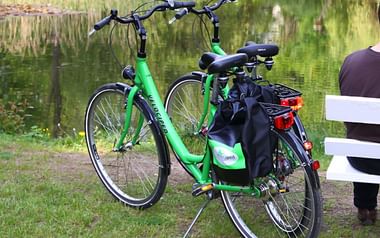
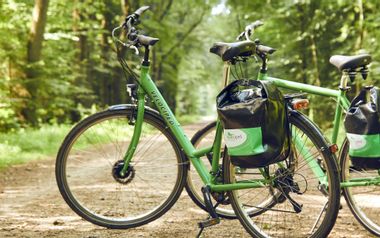
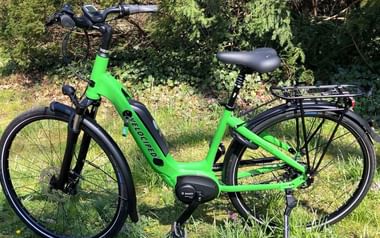


We would recommend the 7-speed tourer for all those that are looking for a back-pedal brake and wide gel seat for maximum comfort in an upright sitting position. It is equipped with a simple hub gear shift and is perfectly suited to tours on flat to slightly hilly terrain.

The 27-speed tourer is the best choice for cyclists that value the advantages of the dérailleur gear shift for flexibility whilst going up and down hills. This bike allows you to be a little more active without compromising on saddle comfort and practical everyday suitability.

E-bikes combine a lot of advantages. The electric drive ensures a completely relaxed cycling, even during long tours or on hilly routes. Other features, such as a suspension seat post and front fork plus well-tuned gears, ensure additional riding comfort.

On this trip, you can choose between e-bikes with a back-pedal brake or a freewheel. The e-bikes with a freewheel also offer you excellent riding comfort with a suspension seat post and front fork. Please simply indicate your preference when booking.

I provide you with advice and assistance
Miriam Houda
